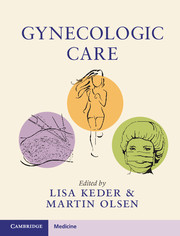Book contents
41 - Physicians and Healthcare Systems
from Section 6 - General Considerations
Published online by Cambridge University Press: 01 February 2018
Summary
Introduction
Systems-based practice is one of the six competencies defined as essential for graduate medical education by the the Accreditation Council for Graduate Medical Education (ACGME). Specific educational topics for systems-based practice in Ob/Gyn education are described in the general considerations section of the Committee for Resident Education in Obstetrics and Gynecology(CREOG) goals and objectives. Several topics related to healthcare systems are subcategories within these general considerations; Box 41.1 lists goals for this chapter as modified from CREOG objectives. The topics of physician disruption, licensure-privileging-credentialing, patient advocacy, and quality improvement are discussed in the sections that follow.
Box 41.1 Modified Committee for Resident Education in Ob/Gyn System-Based Practice Objectives Related to Healthcare Systems
A. Understand how their patient care and other professional practices affect other healthcare professionals, the healthcare organization, and the larger society, and how these elements of the system affect their practices.
B. Understand the processes for obtaining licensure, receiving hospital privileges, and credentialing.
C. Advocate for the patient, women's health, and the profession of obstetrics and gynecology
D. Partner with healthcare managers and healthcare providers to assess, coordinate, and improve healthcare and know how these activities can affect system performance.
Scope of the Problem
The provision of excellent patient care is of course the bedrock component of a physician's role. Patient safety and welfare are, however, deeply impacted by events and processes outside the physician-patient relationship. This chapter discusses issues which, if suboptimally managed, can have harmful impacts upon the care that patients receive.
Physician Disruption
This section discusses mechanisms a healthcare system can implement to improve the behavior of physicians whose activities disrupt the smooth functioning of patient care environments. For a discussion of physician well-being, see Chapter 44.
The American Medical Association defines disruptive behavior as “a style of interaction … that interferes with patient care … and tends to cause distress among other staff and affect overall work environment.” Examples of disruptive behavior include yelling at other healthcare team members, inappropriate touching, sexist, or racist comments and throwing instruments. Only a small number of physicians (approximately 3–5 percent) are responsible for most of the episodes of disruptive behavior. Many disruptive physicians began to show evidence of such behavior as medical students. Patients who witness disruptive behavior may lose confidence in their physician as well as the institution where the disruptive behavior has occurred.
- Type
- Chapter
- Information
- Gynecologic Care , pp. 394 - 401Publisher: Cambridge University PressPrint publication year: 2018



